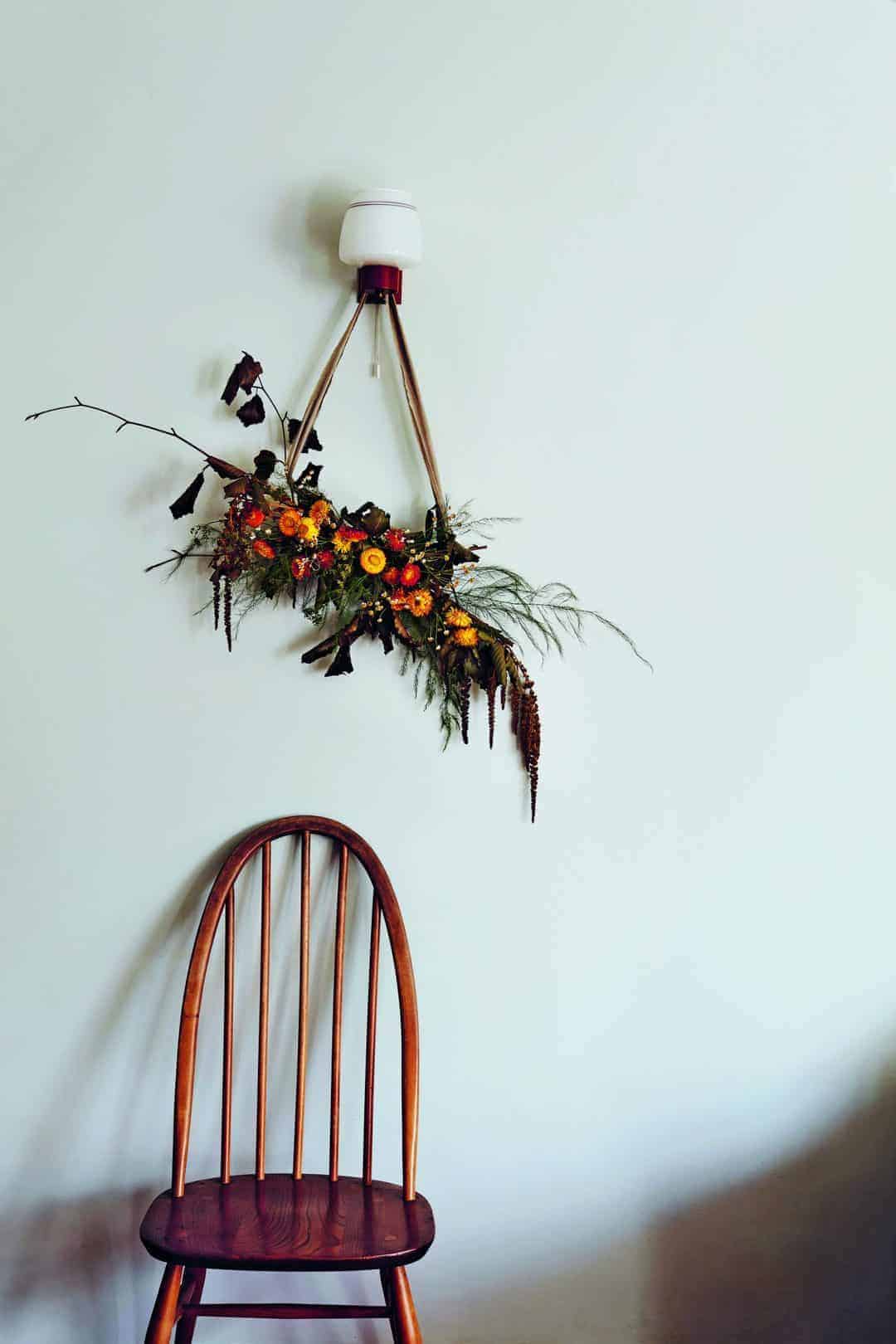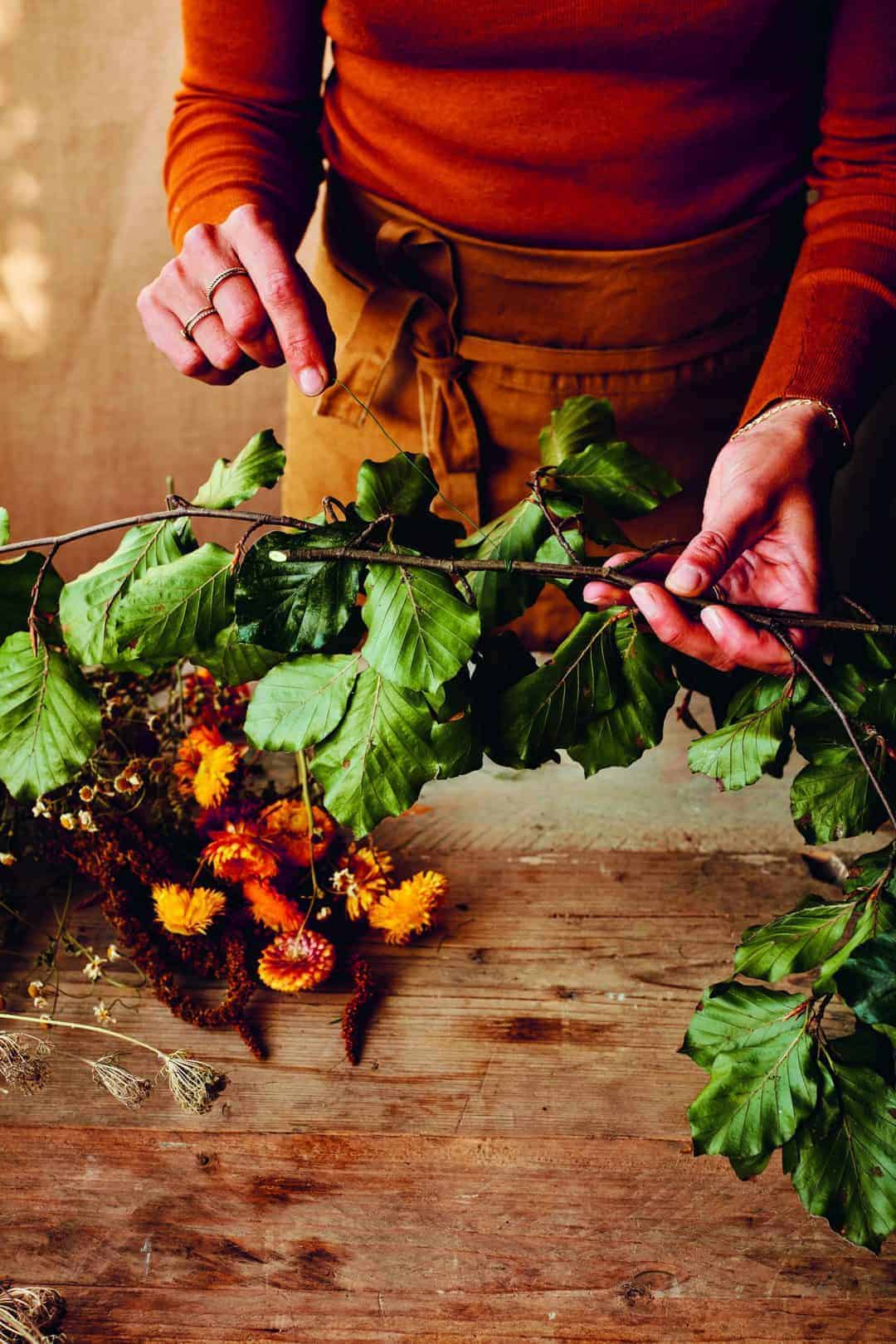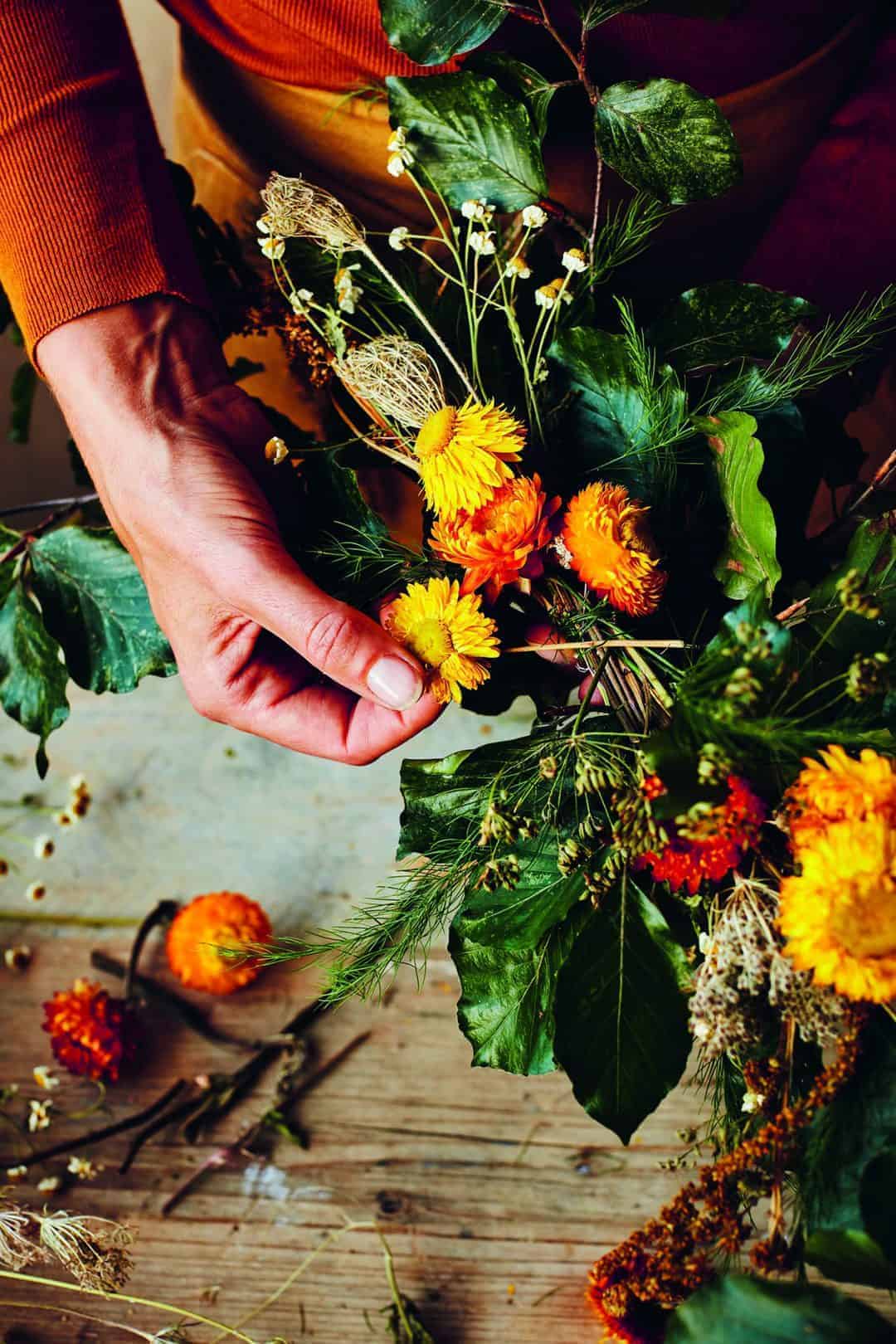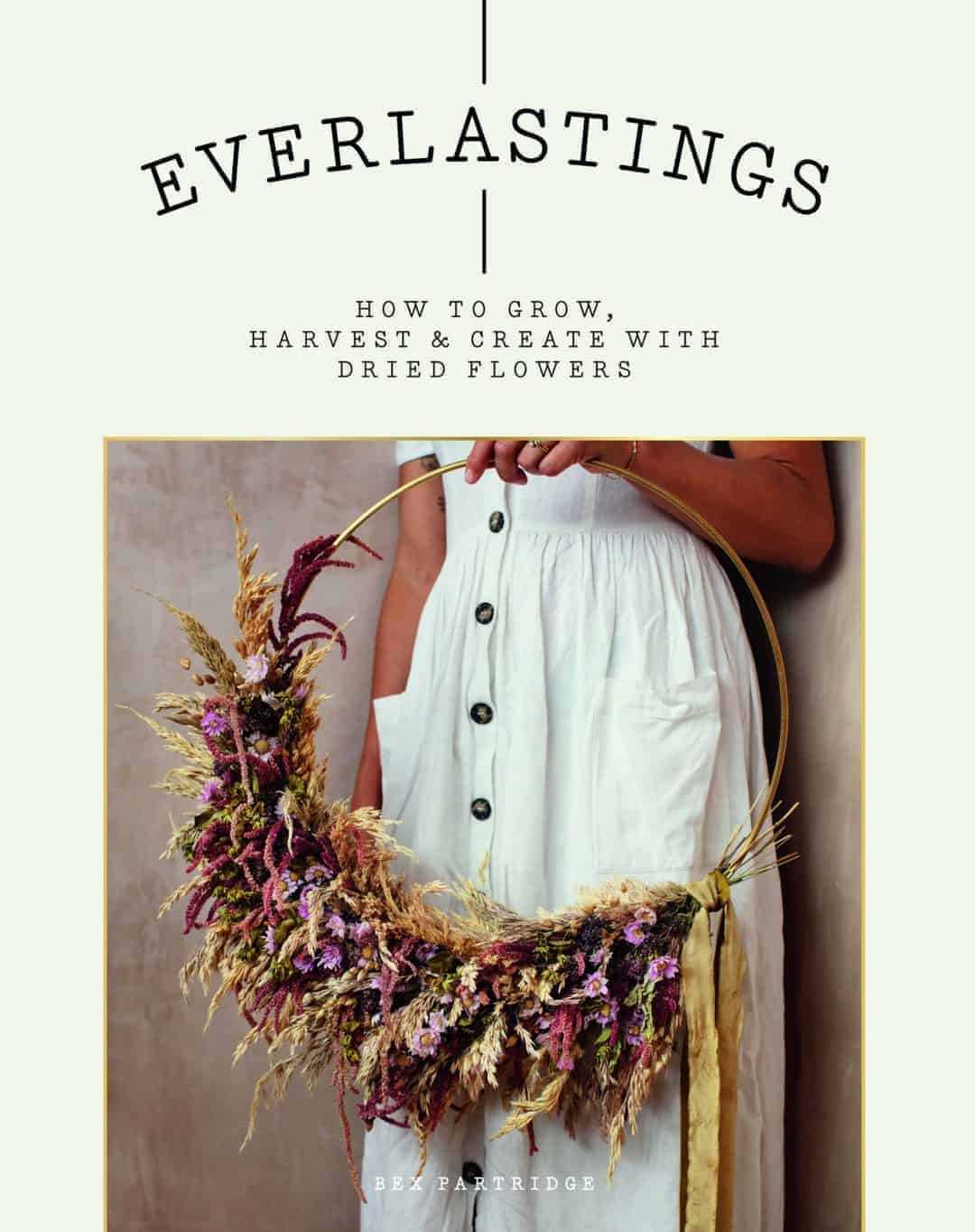make a foraged hanging bough – wild & beautiful
How often have you come across a fallen branch ablaze with Autumn colours and wondered what you could do with it? I often arrive home from dog walks with bits of lichen, leaves and the odd interestingly-shaped branch. The trick with the branches is to prevent my dog, Woody, from leaping up to grab and run off with them. The foraged findings that do make it home often sit on my hall table until withered – and never really bring the sense of excitement that inspired me to pick them up in the first place.
Then I came across this stunning idea by Bex Partridge and now I have a plan! The fabulously creative idea is to make a bough wall hanging to really allow your seasonal findings to shine. It’s taken from her book Everlastings (Hardie Grant, £14.99) and Bex has kindly shared her simple step by steps with us. Next branch I pick up is now wall art in the making. Unless Woody decides otherwise of course and he manages to turn it into mulch in a matter of moments . Hope you enjoy!

How to make a foraged hanging bough – wild & beautiful
Hanging boughs are really simple to make and are a wonderful alternative to wreaths.
You can make them as free-flowing as you like, or go for a more structured look, but the method remains the same.
Boughs can also be made using fresh material and allowed to dry in situ, as Bex has done here:
What you’ll need
- A big, beautiful branch – the more imperfect the better as it gives the material you hang from it a supporting grip – or, alternatively, a few branches with leaves or seed heads on them, such as beech or birch, which can be wired together to make the base. Bex’s is copper beech
- Florist wire (you can by rustic jute-wrapped wire here and strong plain wire here)
- A selection of pressed or fresh leaves, seed heads and flowers of your choice, all should be at least the length of your branch. I used asparagus fern, autumnal-toned everlastings (you can buy on Etsy here), dried feverfew and some strands of amaranth (you can buy dried amaranth on Etsy here)
- A length of naturally dyed cloth (find some lovely plant-dyed ribbons and cloth on Etsy from these lovely sellers: Roses Lane Fabrics; Botanical Silk Ribbons; C Fleurs Design
Step by Steps

- Start by positioning your main branch, or the few branches you have gathered into a solid base. Consider which side to make the top, and whether you need to trim any side-shoots. If you’re using a few branches, tie them together securely with florist wire.
- Start to layer up your bough, adding more of your selected materials in as uniform or haphazard a way as you like.
- Once you’re happy with the main structure of your bough, wrap the wire round a number of times. This wire will be where you feed in the stems of the other materials, so make sure you have enough loops of wire to accommodate them all. Secure the ends of the wire.

- Now add in your remaining flowers and seed heads, slotting them along the base of the bough and between the wire loops. Fill any gaps, paying attention to the weight of the bough – if it’s too heavy on one side, the bough will pull down that way when hanging. This isn’t necessarily a problem, but it will have an impact on the final display.

- Finally, tie each end of your length of naturally dyed cloth around the bough so you have a loop, and hang it in position.
- You can also use these as mantlepiece decorations or centrepieces above tables.
Get loads more ideas from Bex’s Everlastings book

For anyone interested in growing and drying their own dried flowers, Bex’ book Everlastings is essential reading. There are loads of creative ideas and expert tips. It’s available to buy at most good book shops including Waterstones and Amazon.
Bex is a floral artist and I love how she describes what she does: ‘I work with dried flowers throughout their entire lifecycle life from seed, to plant to harvest and then drying and creating.
‘My dried flower art is a way to keep connected to the natural world and to season’s past. It’s beauty at its most sustainable and a moment of preservation in a world so encouraging of consumption.’
You might also like
Dried Flower Embroidery book by Olga Prinku





Leave a Reply